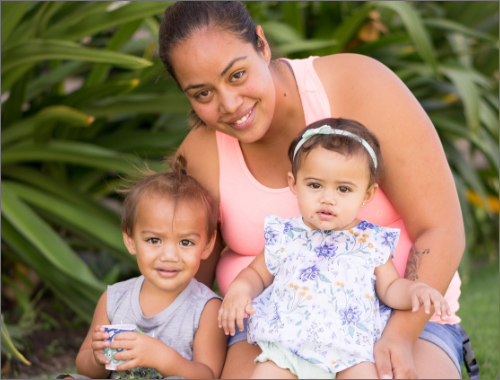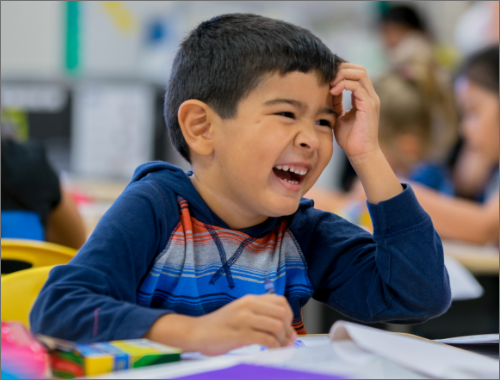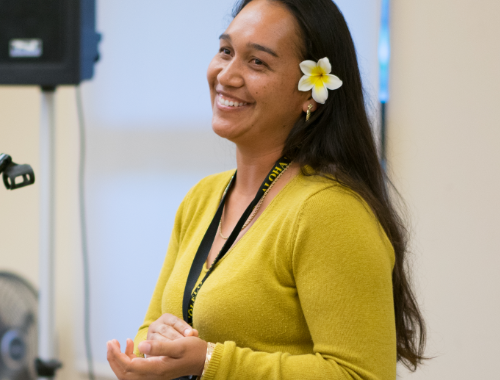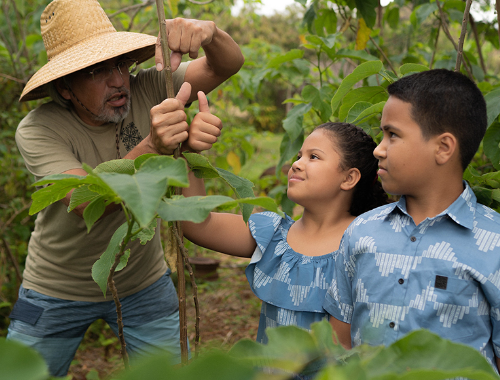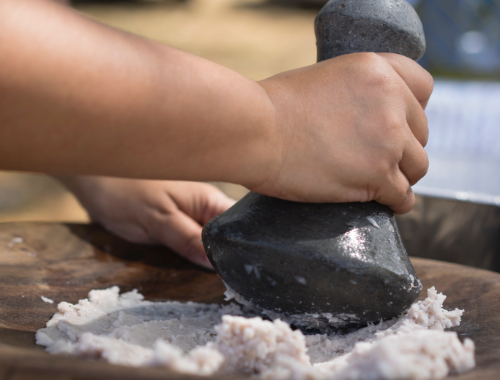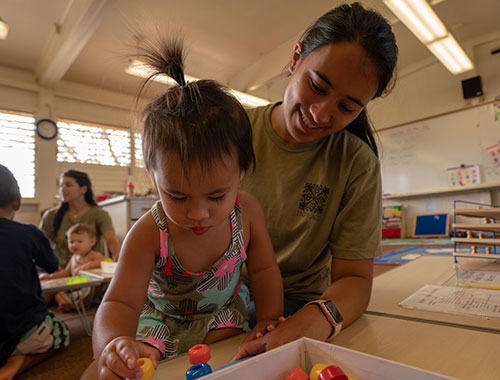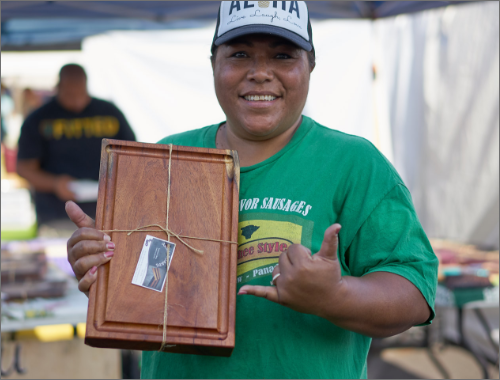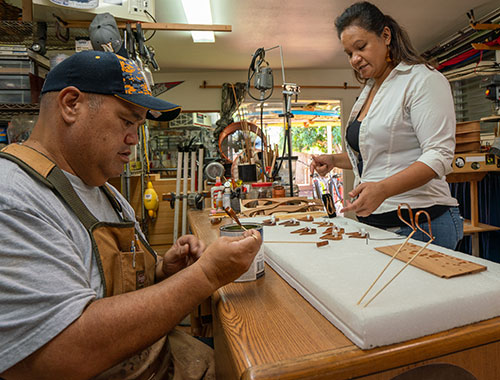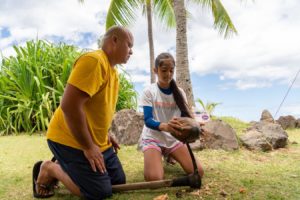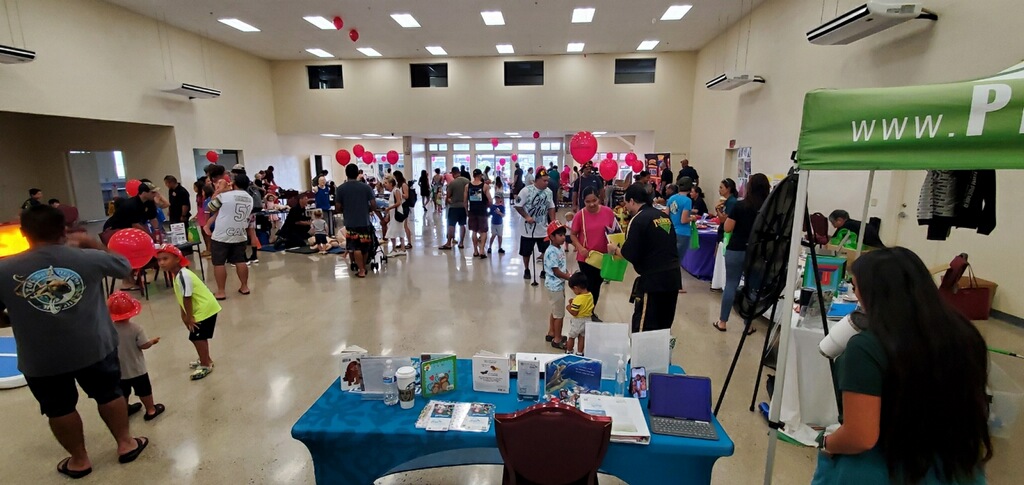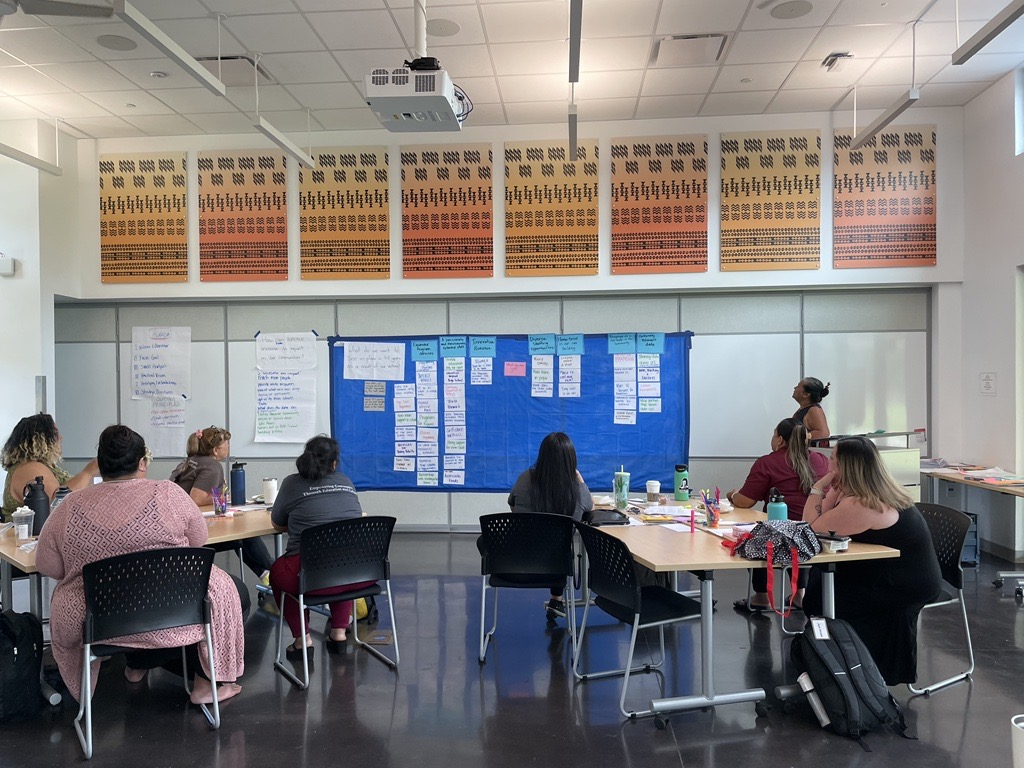“Ola Wai‘anae i ka makani Kaiāulu.” This famous proverb was affectionately announced by Hiʻiakaikapoliopele as she arrived outside of Waiʻanae during her travels back to Hawaiʻi island with Pele’s sweetheart Lohiʻauipo of Kauaʻi. Like most traditional Hawaiian moʻolelo, visitors who arrived in new places would announce and honor those places by greeting the land, the winds, the rains and its people. This form of aloha ʻāina, as displayed by Hiʻiaka and the many ancestors of Hawaiʻi, helped the kupa o ka ʻāina (natives of the place) to remain connected with their environment through an acute and harmonious relationship to their homelands. This ancient practice of aloha ʻāina became the cornerstone of INPEACE’s newest summer program initiative, Keiki Kaiāulu.
Keiki Kaiāulu offered experiences and opportunities to visit places throughout Wai‘anae, to learn inoa wahi pana (place names and geological identification), moʻolelo (history and mythology), mele (song and chant) and mālama ʻāina (natural resource management).
During the months of June and July 2021, keiki kaiāpuni (Hawaiian immersion students) from along the Waiʻanae coast were invited to participate in the 2-week summer program, Keiki Kaiāulu, a project by INPEACE’s Kupu Ola program. The goal was empowering young leaders in our kaiāulu (community) through place-based self-identification curriculum. Keiki Kaiāulu offered experiences and opportunities to visit places throughout Wai‘anae, to learn inoa wahi pana (place names and geological identification), moʻolelo (history and mythology), mele (song and chant) and mālama ʻāina (natural resource management). Along with visiting and learning about their ʻāina, keiki participated in art projects and food preparation lessons as an expression of their connection to the places and moʻolelo that they learned.
Through a funding partnership with the Hawai‘i DOEʻs Ke Ala Naʻauao program, Keiki Kaiāulu’s kumu, Kaulana & Kapela Eli, designed and created curriculum to support ‘ōlelo Hawai‘i speaking youth of Wai‘anae. The program offered youth a unique opportunity to restore and normalize the language of their ancestors in the places and spaces of their community. During huakaʻi through each ahupuaʻa, keiki were re-introduced to the ancient names, practices, and ways of Waiʻanae kupuna in their kulāiwi (native lands). Keiki enjoyed activities like cleaning ‘ōpelu along the shores of Nānākuli, grating niu (coconut) at Kāne‘īlio Point near Pōkaʻī, walking the ʻauwai system of loʻi kalo at Kānewai, Kaʻala, and a holoholo hāpapa (reef walk) to identify native limu and pūpū along the lush reef below Kamaileunu with Waiʻanae High School’s Marine Science Learning kumu, Katie Kealoha. While taking valuable lessons from these places, keiki also honored these ancient spaces with their ʻōlelo, mele, moʻolelo and mālama ‘āina. In this way, keiki and kaiāulu were nurtured and uplifted.
According to Kawailani Landford and Glenn Waa Kawai‘ae‘a, parents of Ha‘aheo, one of the participants: “Us mākua are still learning ‘ōlelo Hawai‘i, so for Ha‘aheo to be around peers and kumu who can converse with her is maika‘i.”
Another parent, Geena Koka, had this to say: “Our ‘ohana usually resorts to cooking convenient Hawaiian food with store bought ingredients and foreign influences (for example, kalua pig with cabbage, chicken long rice, lomi salmon, etc…) so these kids getting opportunities to learn traditional methods of gathering [and] preparing … is kupuna knowledge filling generational gaps.”
Keiki Kaiāulu translates to Children of the Kaiāulu wind, the wind of their Waiʻanae community. When asked what their favorite part of the program was, most keiki replied “learning my mo‘olelo and seeing my ‘āina”. This response indicates a key element of ancient and modern Hawaiian education: pilina (relationship). The youth embraced their ʻāina and their kuleana through powerful ʻāina-based experiences and they leave the program educated and empowered as future leaders for generations to come. Ola Waiʻanae-Waiʻanae exists, lives and thrives for and through our keiki.


